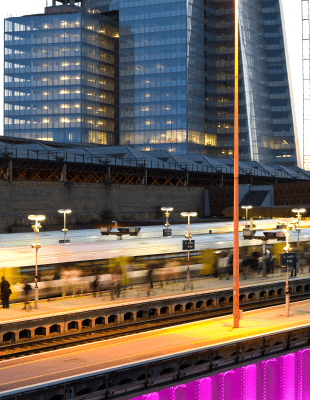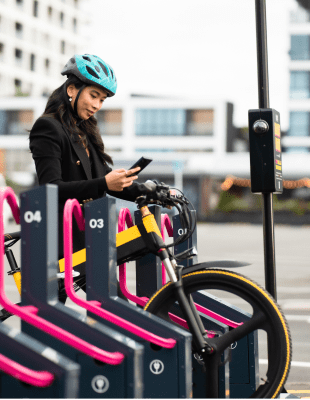With Australia’s fair share of climate events over the summer break, I hear an escalating alarm bell for more resilient infrastructure and services. Friends and family who were without power, cut off by floodwaters, or were too heat stricken to head outside had a pretty miserable start to the new year. And as a planning professional it leaves me questioning: how can we better plan mobility services and infrastructure to handle a more unpredictable world?
For nearly a century professional planners have taken a functional planning approach to developing urban areas. First promoted by Le Corbusier and his Congres Internationaux d’Architecture Moderne (CIAM) contemporaries in the 1930s, was the idea of ‘Radiant Cities’; this method separates land use based on functional zones (living, learning, working, producing etc) and is supported by freely circulating transport networks with abundant green spaces in between.
In practice, it has created disparate, low density, sprawling, car-dependent settlements across the globe. Suburbs upon suburbs of houses, punctuated by business parks, educational campuses, industrial zones and shopping centres. These settlements are dependent on high levels of growth and mobility and are very vulnerable to shocks and network disturbance.
With increasing rates of social inequity, digital disruption and environmental events, we need to move away from these functional methods of creating twentieth century styled ‘Radiant Cities’ to people orientated methods of creating ‘Resilient Cities’.
Environmental scientists describe methods of resilience as either resistive, adaptive or transformational. Based on these methods, urban growth and our mobility systems can be made resilient by:
- Resisting – Keep doing what we have always done to predict and provide land use and mobility planning, but strengthen the transport networks and infrastructure that supports it - so they are bigger, higher and stronger.
- Adapting – Retain functional land use zones but adapt how transport services them. Adopt more efficient and sustainable public transport, electric, automated and connected vehicles to connect land uses.
- Transformational – Change how and where people live, work, learn and play – and hence when, why and how we travel. Mixed use developments and 15 minute neighbourhoods supported by people-orientated mobility as a service and streets as places, not just movement corridors.
Resistive and adaptive methods are the easiest path to follow as they use existing resources and incrementally improve existing systems. But transformational planning will create the most resilient and sustainable outcomes for the future.
With the development of the motor car and geopolitical events, we were bold in adopting functional planning methods last century. There is no reason - when we are supported by rapid energy transition and unprecedented digital evolution - why we can’t be bold now and adopt transformational planning methods that will provide resilient mobility services and infrastructure and accelerate a planet positive future.





